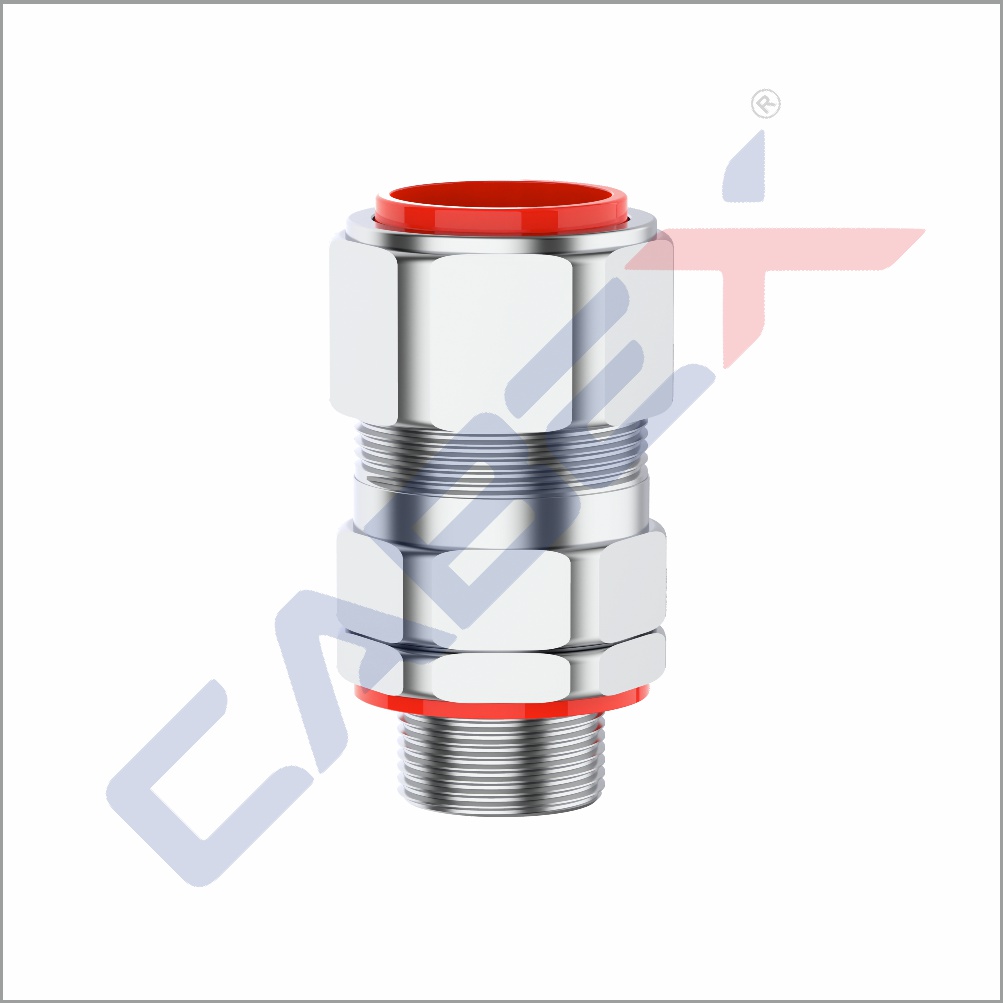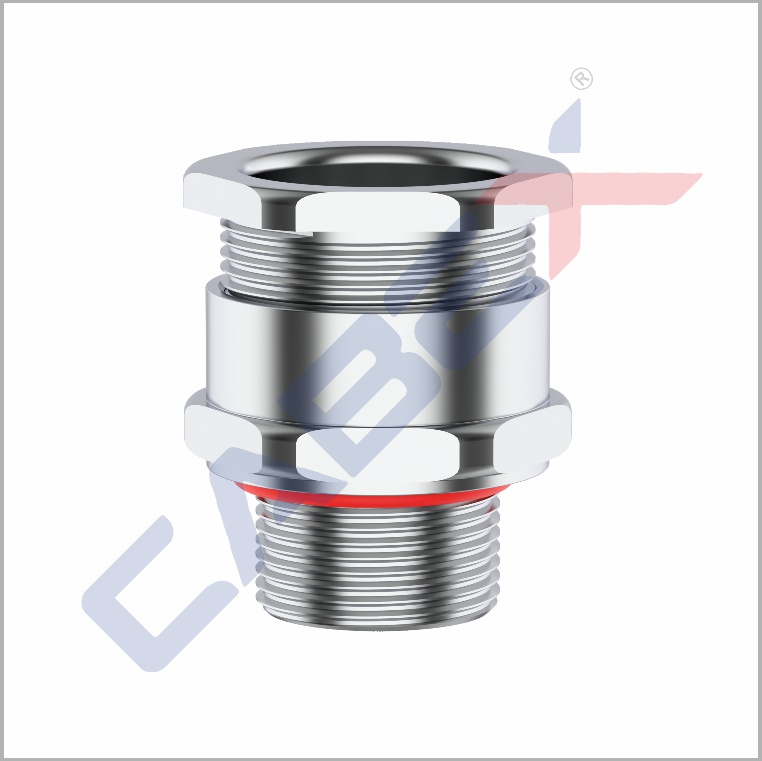Difference Between Unarmoured and Armoured Cable Gland
Cable glands are thought of as an essential part of most electrical installations used along with cable to provide a secure assembly that protects and safeguards cables. Most of the time, the decision between Unarmoured and Armoured Cable Gland would rely on the type of cable and also the environmental condition of the installation. We have searched into the differences in unarmoured and armoured cable gland, properties, and methods in installation and where each would best be applied in this blog post.
Introduction to Cable Glands
Cable glands are deployed to secure and firmly attach the end of an electrical cable to equipment. They provide for sealing, grounding, and stress relief with protection of the cable from any damage. The primary intention behind their usage is to have safe and successful installations of cables at any location. There are two major categories within these: unarmoured cable glands and armoured cable glands.
What are Armoured Cable Glands?

A cable gland for armoured cables is designed specially for use on armoured cables. Armoured cables have an added protection, which is usually steel wire or tape, offering extra strength and mechanical durability as well. Cable glands for armoured cables incorporate the extra layer of protection so that when the connection is made, they will have just the same mechanical protection.
What is an Unarmoured Cable Gland?

An unarmoured cable gland is installed with the unarmoured cables where there is no extra layer of mechanical protection on the cable. The design of glands is less complex and mostly applied in scenarios where extreme conditions or mechanical damage are inflicted on the cable. Sealing and strain relief o
n cables of standard type is through unarmoured cable glands.
You May Also Like This Blog:- Step-by-Step Guide to Terminating SWA Cable in 2024
Understanding the Basics: Armoured vs. Unarmoured Cable Gland
Unarmoured and armoured cable gland sound like technical jargon until you realise that they relate to the type of cable they are used with.
- Armoured Cable Gland: This is used with armoured cables, which carry extra layers of armouring for protection. Such cables are used for mechanical protection one might need to use in other application environments, for example at a construction site, underground, or any other really rough and tough installation.
- Unarmoured Cable Gland: The name itself explains the application, these glands are to be used with unarmoured cables, which do not have any mechanical protection other than the gland itself. These cables are typically found in safer sites where the opportunities of damage due to physical forces are extremely low.
Key Differences Between Armoured and Unarmoured Cable Glands
This variation of Unarmoured and Armoured Cable Gland goes far beyond the names. Here is the clear breakdown for you:
| Feature | Armoured Cable Gland | Unarmoured Cable Gland |
| Cable Type | It is used with armoured cables with additional layers of protective covers. | It is installed with unarmoured cables without additional mechanical protection. |
| Environment Suitability | It is suitable to be mounted in unforgiving, rigid, or outdoor setups. | It can be mounted in a safe indoor, or less aggressive environment. |
| Installation Complexity | Installation must be done properly due to the armour layer. | Easy and quick installation |
| Cost | More expensive because of more materials and more complicated | Lower Cost |
| Mechanical Protection | Strong mechanical protection | Minimal mechanical protection |
Why Use Armoured Cable Glands?
Armoured cable glands are the most appropriate when working with cables that must be exposed to rigorous conditions. And that is because of the following reasons:
- Heavy-Duty Protection: Armoured cables have a layer of steel tape or wire buried beneath their outer sheath, which makes them harder.
- Ideal for Challenging Terrains: It is like having a bodyguard for your cables. Ideal for underground or industrial applications where cables may be under physical stress.
- Resistance to Environmental Hazards: They protect from moisture, dust, and all environmental attacks.
When to Use Unarmoured Cable Glands?
Unarmoured cable glands are ideal when things are not too heavy going. Here are a couple of reasons you can choose them:
- Lightweight and Flexible: They are lighter as well as flexible because they do not have the additional armour; hence the installation process is easier.
- They Cost Less: As compared to the armoured counterparts of the cable glands, they cost less. They are the best option if you are on a budget.
- Very Ideal for Indoor Use: If there are no unforgiving conditions for exposure to the cables, unarmoured glands will just be perfect.
You May Also Like This Blog:- The Latest Trend Electrical Cable Gland Size Charts for 2024
Tips for Armoured and Unarmoured Cable Gland Installation
Apart from the armoured and unarmoured cable gland installation, here are some rules to be followed. They are cool tips:
Armoured Cable Gland Installation:
- Ensure that there is proper earth armour so that the safety hazards are not exposed.
- The size of the gland should be equal to that of the cable so that there is tight and secure fitting.
- Proper equipment needs to be used so nothing goes wrong or gets damaged, either the cable or the gland.
Unarmoured Cable Gland Installation:
- Clean the back of the cable before inserting it into the gland.
- Check the IP rating of the gland to ensure that it offers an appropriate level of protection in your application.
- Fit locking nuts such that glands do not loosen with time.
Key Selection Criteria for Unarmoured and Armoured Cable Gland
- Safety Requirement: Does your environment require extra safety?
- Budget: Do you want something budget-friendly?
- Installation Environment: Indoor or outdoor? Is the terrain rough, or is it smooth?
Common Mistakes to Avoid with Cable Glands
You are like a bull in a china shop if you rush through the installation. Here are some of the common ones to avoid:
- Choosing a too small cable gland: It can cause sealing problems as well as some safety risks.
- Neglecting Proper Earthing: especially for armoured cables to prevent electrical hazards.
- Improper Torquing: Overtorquing may therefore damage the cable, and undertorquing may lead to a loose connection.
Comparison of Costs: Which One is Lighter on the Pocket?
While it’s always a temptation to get the cheapest bargain, one must think about the overall cost, not the mere price. Here is an elementary comparison:
| Factor | Armoured Cable Glands | Unarmoured Cable Glands |
| Initial Cost | Higher due to the additional materials and features | Lower due to simpler construction |
| Installation Cost | Higher as they require more care and effort to install | Lower because they are easy to work with. |
| Maintenance Cost | Low, as they are more durable.. | Can be on the higher side as it may get exposed to damaging conditions |
Making the Right Choice for Your Cable Glands
The choice between unarmoured and armoured cable gland has a lot more to do with having the right tool for the job or the wrong one. It should be done considering aspects like environment, level of protection needed, and your budget comprehensively. Key differences and a few installation tips will ensure you a safe, efficient, and cost-effective installation.
FAQs:
Q: What is the difference between armoured and unarmoured cable glands?
ANS: Unarmoured glands are used best in less hazardous environments and tend to be lighter in weight and cheaper in price.
Q: Can I use an unarmoured cable gland for use with armoured cable?
ANS: No, you must use the correct gland with the type of cable. This would leave much too little protection if an unarmoured gland is used on an armoured cable.
Q: Do armoured cable glands cost more?
ANS: Yes, usually they are due to more material plus tighter design in environments.
Q: How to install the armoured and unarmoured cable glands?
ANS: Armoured cable glands should be installed with more caution so as to ensure armour is safely connected and earthed. Unarmoured glands are much more straightforward and faster to install, but they also need to be mounted and screwed appropriately.
Q: Where do I apply armoured cable glands?
ANS: Armoured cable glands should be used outdoors, in underground environments, or in industrial environments where cables may be subjected to mechanical damage.






